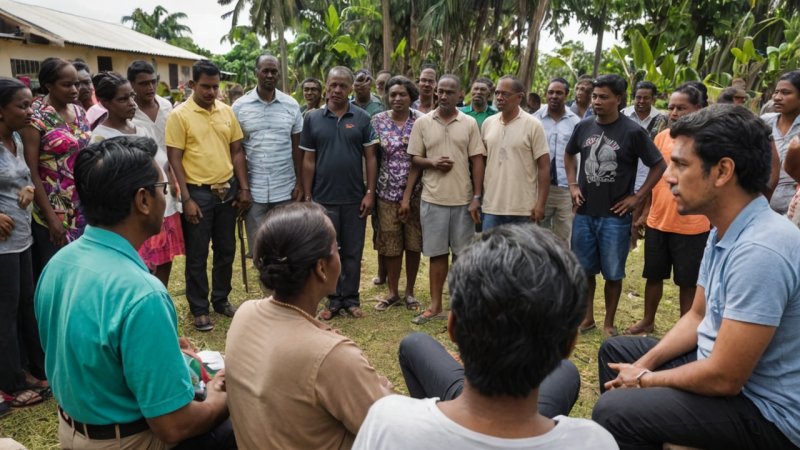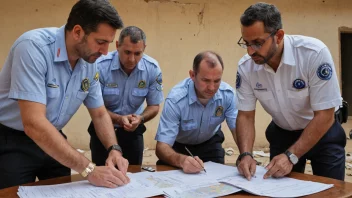In the aftermath of a disaster, the immediate focus often lies on physical recovery—providing shelter, food, and medical care. However, the psychological impact of such events can be just as devastating. Mental health initiatives play a crucial role in helping affected individuals regain their sense of normalcy. This article will compare two primary approaches to supporting mental health in disaster-stricken areas: community-based interventions and professional mental health services. By examining the strengths and weaknesses of each approach, we can better understand how to effectively support mental health initiatives in these challenging environments.
Community-Based Interventions
Community-based interventions typically involve local volunteers and leaders who organize mental health support initiatives. These programs often leverage existing community structures and cultural practices to provide support.
Pros
- Accessibility: Community-based interventions are often more accessible to those in need, as they utilize local resources and networks.
- Cultural Relevance: These programs are usually tailored to the community's cultural context, making them more relatable and effective.
- Empowerment: Involving community members in the process fosters a sense of ownership and empowerment, which can enhance recovery.
- Cost-Effective: By utilizing local resources and volunteers, these initiatives can operate with lower costs compared to professional services.
Cons
- Limited Training: Volunteers may lack professional training in mental health, which can result in inadequate support.
- Potential for Stigma: In some cultures, mental health issues are stigmatized, which may deter individuals from seeking help even within their community.
- Resource Constraints: Community programs may struggle with limited funding and resources, impacting their ability to sustain long-term initiatives.
Professional Mental Health Services
Professional mental health services involve licensed therapists, psychologists, and psychiatrists who provide specialized care to those affected by trauma. These services can be offered in various settings, including temporary clinics established in disaster zones.
Pros
- Expertise: Professionals bring a wealth of knowledge and training in mental health, which can lead to more effective treatment.
- Structured Approaches: Professional services often utilize evidence-based therapies, providing a structured framework for recovery.
- Privacy and Confidentiality: Professional settings can offer a level of privacy that may encourage individuals to seek help without fear of stigma.
Cons
- Accessibility Issues: Professional services may not be readily available in remote or rural disaster-affected areas, limiting access for those in need.
- Cultural Disconnect: Professionals from outside the community may not fully understand cultural nuances, which can hinder the effectiveness of their interventions.
- Higher Costs: These services often require significant funding, which may not be sustainable in the long term.
Comparative Analysis
When comparing community-based interventions with professional mental health services, several key differences emerge that highlight their unique advantages and challenges.
Accessibility and Reach
Community-based interventions are typically more accessible, as they are integrated into the community fabric. They can quickly mobilize local volunteers and resources to reach individuals in need. In contrast, professional services may take longer to establish and often require more logistical support to ensure accessibility.
Cultural Relevance
Community-based approaches have the advantage of being culturally relevant, as they draw from local customs and practices. This can enhance trust and encourage individuals to participate. Professional services, while evidence-based, may not always resonate with local populations due to cultural differences.
Expertise vs. Relatability
While professional mental health services offer expert knowledge and structured treatment options, community-based interventions provide relatability and understanding. The effectiveness of mental health support can depend on the individual's comfort level with the provider, whether they are a trained professional or a community member.
Long-Term Sustainability
Community-based programs may struggle with sustainability due to limited resources and reliance on volunteers. Conversely, professional services often require ongoing funding and infrastructure, which can be challenging to maintain in disaster-stricken areas.
Conclusion
Both community-based interventions and professional mental health services play vital roles in supporting mental health in disaster-stricken areas. Community-based approaches offer accessibility, cultural relevance, and empowerment, while professional services provide expertise and structured treatment. An effective strategy may involve a hybrid model that combines the strengths of both approaches, ensuring that individuals receive comprehensive support tailored to their needs. By understanding the pros and cons of each method, stakeholders can better strategize their efforts to support mental health initiatives, ultimately fostering resilience and recovery in affected communities.






